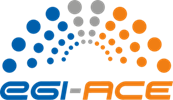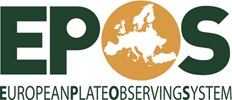-
UNCAN-Connect
OngoingThe UNCAN-Connect project aims to revolutionize cancer research and treatment by promoting collaboration and innovation across Europe, helping save patients’ lives and improve the quality of care.
-
DVPS
OngoingThe DVPS project aims to develop multimodal fundamental model (MMFM) technologies that use different data types and modalities to efficiently solve tasks in multiple domains.
-
LAIF Service Center
OngoingThe LUMI AI Factory (LAIF) project aims to provide a supercomputing service infrastructure for artificial intelligence (AI), along with an open AI ecosystem built around the LUMI AI supercomputer. Cyfronet is involved in all project tasks. The main work will focus on training, adapting AI software to the LUMI supercomputer, integrating data and services with the LUMI AI supercomputer infrastructure.
-
EOSC Data Commons
OngoingThe project mission is to support the establishment of the EOSC as the European Research Commons, a global trusted ecosystem that provides seamless access to high-quality, interoperable research results and services, enabling European researchers to collaborate more easily, be more productive and achieve higher levels of excellence.
-
DARE SGA 1
OngoingDARE SGA1 assumes the development of next-generation European processors and computing systems. Part of the work will also include preparations of a new software ecosystem and RISC-V versions of scientific software packages.
-
SAGE
OngoingSAGE is a part of bigger idea to use data to support sustainable development and environmental goals across Europe.
-
EPOS ON
OngoingThe EPOS ON (EPOS Optimization and EvolutioN) project is part of the operational phase of EPOS, with the aim of consolidating and optimizing its research infrastructure, as well as evolving it towards new fields of science, new users, and meeting new societal needs.
-
Fortissimo Plus
OngoingThe FFplus project aims to enable small and medium-sized enterprises (SMEs) and start-ups in Europe to conduct experiments using High Performance Computing (HPC) infrastructure and artificial intelligence (AI) methods to improve their competitiveness and innovation potential.
-
EPICURE
OngoingThe main objective of the EPICURE project is to establish support activity for EuroHPC user applications at Level 2 and Level 3. As part of the project, a support group will be established, Application Support Team (AST), whose main task will be to cooperate with the EuroHPC JU application evaluation office and directly support projects that have obtained computing time on EuroHPC JU resources.
-
EOSC Beyond
OngoingThe EOSC Beyond project aims to provide a new alternative to open science and tools for science in the European Open Science Cloud (EOSC) context by providing a new EOSC Core platform feature. The planned improvements are intended to enable scientific applications to find, compose and access open science resources and offer them as integrated solutions.
-
Meetween
OngoingThe Meetween project aims to build the science-based technology solutions needed to power Europe's next generation of video conferencing platforms and support and facilitate business collaboration across the European Union. Comprehensive, integrated algorithmic capabilities offered by fundamental models and self-supervised training on large data sets will be used to adapt agilely to the participant's context, cultural and regional specificities, including linguistic ones. Protecting the European vision of artificial intelligence is also an important aspect of the project.
-
GEMINI
OngoingThe GEMINI project aims to provide validated multi-organ and multi-scale computational models to support therapeutic decisions and improve fundamental understanding of ischemic and hemorrhagic acute strokes. Precisely, GEMINI will deliver validated, integrated, multi-scale, multi-organ Digital Twin in Healthcare (DTH) models for cerebral blood and cerebrospinal fluid flow, brain perfusion and metabolism, blood flow and thrombosis along the heart-brain axis by integrating available and newly developed dynamic, interoperable and modular computational models.
-
LUMI-Q
OngoingThe main goals of the LUMI-Q project are the procurement, installation, and operational deployment of a quantum computer. The final system will utilize European quantum technologies
-
PIONIER-Q
OngoingThe PIONIER-Q consortium is a response to the EuroQCI initiative. PIONIER-Q combines the activities of the Polish Quantum Communication Infrastructure community. The PIONIER-Q project aims to provide a quantum critical distribution infrastructure and a quantum communication network using the existing fibre infrastructure of the PIONIER network. Encryptors and devices for quantum key distribution (QKD) will be installed at selected network points.
-
EuroCC 2
OngoingEuroHPC is a joint venture of European countries and the European Commission (EuroHPC JU), aimed at building exascale computing infrastructure in Europe. As part of this project, a network of National EuroHPC Competence Centres is created, whose task is to support scientific research in the industry with the participation of researchers from the academic community and using computing resources provided by EuroHPC supercomputers.
-
DOME
OngoingThe DOME project (A Distributed Open Marketplace for Europe Cloud and Edge Services) building on the Gaia-X program and open standards, will provide a technical complement to the Digital Europe program supporting the development and adoption of trusted Cloud and Edge services in Europe.
-
Geo-INQUIRE
OngoingThe Geo-INQUIRE (Geosphere INfrastructures for QUestions into Integrated REsearch) project will allow a better understanding of the fundamental processes occurring in the Earth's system, in particular those related to geohazards, while leading to an increased capacity for the sustainable and safe development and use of geosources.
-
DT-GEO
CompletedThe project aimed to implement a prototype of the so-called Digital Twin (DT) for geophysical stress testing, consisting of interrelated components that addressed threats from earthquakes (natural or anthropogenic), volcanoes, earthquake tsunamis, and landslides.
-
InterTwin
CompletedInterTwin co-designed and implemented a prototype for an interdisciplinary solution called the Digital Twin Engine (DTE), an open-source platform that provided generic and customized modelling and simulation software components to integrate application-specific digital twins (DT).
-
EuroScienceGateway
CompletedEuroScienceGateway used a distributed computing network in 13 European countries, accessible through 6 national, user-friendly web portals, which facilitated access to computing and storage infrastructures across Europe, as well as data, tools, workflows, and services adapted to the needs of scientists.
-
EUMaster4HPC
OngoingThe aim of the project is to define and develop a new and innovative European Master's degree program focusing on HPC. In principle, the program will equip students with HPC competences and knowledge required by academia and industry.
-
EPOS-ERIC
OngoingThe main task of EPOS is to integrate diverse and dispersed European Research Infrastructures in solid Earth sciences, based on modern IT technologies/
-
Sano
OngoingThe goal of the project is to create a computational medicine centre in Krakow. The Centre will be the main driver of European progress in this fast-growing sector, developing advanced engineering methods for the prevention, diagnosis and treatment of diseases, and meeting the global need for radically improved healthcare systems.
-
LUMI
OngoingThe Large Unified Modern Infrastructure project is a joint venture of 10 European countries aimed at making the resources of the LUMI supercomputer operationally available to the scientific community in Europe.
-
FAIRCORE4EOSC
CompletedThe main goal of the project was to provide an open and fully operational FAIR EOSC ecosystem.
-
PROTEUS-RS
CompletedThe project aimed to implement models and a number of numerical simulations based on high-performance computer architectures for the design of the manufacturing process of metal long elements.
-
EUreka3D
CompletedEUreka3D implemented an approach to the digital transformation of the CH (Cultural Heritage) sector based on providing services and tools compliant with Europeana CSP, supported by advanced computing and data storage resources. The goal was to register a high-quality 3D digitisation service with the EOSC.
-
EDITH
CompletedThe main goal of the EDITH project was to support the development of ecosystems for so-called 'digital twins' in healthcare in Europe. As part of the project, the architecture of an integrated system was developed to implement the concept of the "digital twin" of man, based on standardised metadata and models, as well as a vision of its further development.
-
EOSC Future
CompletedThrough the development of the EOSC Portal, the project aimed to extend the EOSC ecosystem, integrate existing scientific infrastructures and initiatives, and engage new field and national research communities.
-
FINDR
CompletedThe main aim of the FINDR project was to deliver transparent and unified access to Earth Observation Data, primarily sattellite data, in order to support food production and food and agriculture industry.
-
EGI-ACE
CompletedThe aim of the project was to expand the computing infrastructure enabling cooperation in the area of high-intensity problems connecting large volumes of data, which cross the boundaries of a single data center.
-
PRIMAGE
CompletedThe PRIMAGE project aimed at creation of a Clinical Decision Support System (CDSS) for the treatment of cancer (nauroblastoma, glioma) in children.
-
EPOS SP
CompletedThe purpose of the EPOS-SP project was to develop and implement assumptions to ensure the sustainability of the EPOS infrastructure produced in previous projects (EPOS-PP and EPOS-IP).
-
PRACE-6IP
CompletedThe goal of the project was to implement new solutions and maintain the operationality of the PRACE environment in the area of European HPC computing infrastructures.
-
EUROCC
CompletedThe main goal of the EuroCC project was to create a European technological support system based on closely related National Competence Centers in individual European countries, which will allow the academic environment, the enterprise sector (especially SMEs) and public administration to benefit from the available expertise, experience and resources of EuroHPC.
-
EOSC-Synergy
CompletedThe EOSC-Synergy project introduces EOSC standards for national infrastructures in nine European Union countries. This was be done by harmonizing policies and expanding access to research infrastructures, scientific data and domain services.
-
EOSC Enhance
CompletedThe EOSC Enhance project aimed to build an improved, more integrated version of the EOSC Portal, which enabled improvement and extension of solutions that make it easier to find European scientific services and open science data sets.
-
EOSC-hub
CompletedThe aim of the EOSC-hub project was to prepare the launch of a production infrastructure for open science in Europe.
-
PROCESS
CompletedThe solutions developed within the PROCESS (PROviding Computing solutions for ExaScale ChallengeS) project are a breakthrough step in the creation of innovative, exascale processing services, maximizing the benefits of modern data processing systems.
-
XDC
CompletedThe goal of the XDC (eXtreme DataCloud) project was to build specialized solutions for managing and processing large-scale data in a hybrid cloud, thus introducing access and data migration in distributed cloud environments.
-
SERA
CompletedThe overall objective of SERA was to give a significant contribution to improve the access to data, services and research infrastructures, and deliver solutions based on innovative R&D in seismology and earthquake engineering, aiming at reducing the exposure of our society to the risk posed by natural and anthropogenic earthquakes.
-
EPOS IP
CompletedEPOS is integrating the diverse, but advanced European Research Infrastructures for solid Earth Science, and builds on new e-science opportunities to monitor and understand the dynamic and complex solid-Earth System.
-
EOSCpilot
CompletedThe project supported the first phase of the EOSC (European Open Science Cloud) project by developing the foundation of the Open Science Cloud for Research, which enabled to easily combine multiple types of resources.
-
AARC2
CompletedThe goal of AARC2 was to design an AAI (authentication and authorisation infrastructure) framework to develop interoperable AAI, to enable researchers to access the whole research and infrastructure service portfolio with one login.
-
PRACE-5IP
CompletedThe objectives of PRACE-5IP were to build on and seamlessly continue the successes of PRACE and start new innovative and collaborative activities proposed by the consortium.
-
EurValve
CompletedThe essence of the project was to create an expert system that helps assess strategies for personalized treatment of heart valve disease. In order to obtain the appropriate quality of therapy, the project participants used a number of complex techniques for simulating heart function and interpreting medical data.
-
CECM Teaming for Excellence
CompletedThe aim of the project was to develop a detailed plan for the establishment and operation of a Center of Excellence in the field of advanced computer simulation-assisted, innovative methods of medical diagnostics and individualized therapy. The prepared plan was submitted in 2018 to the second phase of the H2020 Teaming for Excellence competition.
-
PRACE-4IP
CompletedThe PRACE-4IP project was designed to build on and seamlessly continue the successes of the Partnership for Advanced Computing in Europe (PRACE) and start new innovative and collaborative activities.
-
INDIGO-DataCloud
CompletedThe project aimed at the development of the PaaS (Platform as a Service) environment, which enabled to conduct the large-scale calculations, integrating the grid and cloud resources and providing unified access to computing- and data storage resources.
-
EGI-Engage
CompletedThe aim of the project was to accelerate the implementation of the Open Science Commons by expanding the capabilities of a European backbone of federated services for computing, storage, data, communication, knowledge and expertise, complementing community-specific capabilities.
-
VirtROLL
CompletedThe main objective of the project was the development of a model-based predictor system, "VirtRoll", supporting the flexible design of strip rolling, joining functionality of numerical simulations, material modelling (metamodelling), sensitivity analysis and optimization to minimize costs related to the design of production processes and to optimize the properties of semi and final products.
-
FedSM
CompletedThe aim of the project was to adapt the standards and best ITSM (IT Service Management) practices to the federated infrastructures. Project activities included aspects of staff management and training (training track), management processes and supporting technologies.
-
VPH-Share
CompletedThe main objective of the VPH-Share project was creation and implementation of a platform for the sharing of scientific applications implemented by the members of a European Virtual Physiological Human (VPH) consortium, as well as to adapt existing applications and data repositories for sharing within the framework of the aforementioned platform.
-
EGI‐InSPIRE
CompletedThe aim of the project was to provide and maintain a sustainable European Grid Infrastructure through the cooperation of a number of institutions in more than 40 countries, building the National Grid Infrastructures.
-
MAPPER
CompletedThe aim of the MAPPER project was to create computational strategies, services and software to support multi-scale simulations in many disciplines of science, using existing and emerging European computing e-Infrastructures (EGI, DEISA). Within the MAPPER project it was planned to support the seven applications from the representative areas of science (nuclear physics, medicine, systems biology, nanotechnology, and hydrology).
-
EUSAS
CompletedThe result of the project was developed methodology and prototypes of a system which allow verification and analysis of various approaches to urban areas, taking into account also the sociological and psychological aspects of human behavior in conflict situations.
-
UrbanFlood
CompletedThe aim of the project was to create a universal IT service platform, available on-line for Early Warning Systems (EWS), which purpose is to warn from the effects of natural disasters; such a platform is capable of processing data coming from large-scale sensor networks via the Internet.
-
gSLM
CompletedThe aim of the project was to develop a model of service level management (SLM) for grid computing environments, and other federated environments. The project consortium united grid computing experts and IT service management experts, so that the proposed SLM model was adapted to the needs of modern computing environments.
-
EGEE-III
CompletedWithin the EGEE-III project preparations were started for the establishment of a permanent, stable organizational structure, in cooperation with state NGI (National Grid Infrastructures) structures and EGI_DS (European Grid Infrastructure Design Study) project, under the 7th Framework Programme.
-
ViroLab
CompletedThe project aim was to develop a virtual laboratory for infectious diseases, facilitating the acquisition of medical knowledge and supporting decision making process.
-
GREDIA
CompletedThe aim of the project was to build a Grid Application Development Platform. The platform was a tool for the construction of new applications. Created applications were differentiated by using the concept of virtual organizations and distributed data sharing, both purely numerical and multimedia.
-
CoreGRID
CompletedWithin the project a European research network was created for the development of theoretical basis of software infrastructure and applications for large-scale distributed computations, as well as grid and peer-to-peer systems.
-
Int.eu.grid
CompletedThe project aimed at the development of advanced infrastructure in the European Research Area, aimed at support of running interactive, demanding applications.
-
EGEE-II
CompletedThe aim of the EGEE-II project was a continuation of EGEE project goals, and in particular: the creation of a pan-European grid computing infrastructure, further increasing the resources of this infrastructure - the number of processors and storage capacity and improvement of the stability of the infrastructure.
-
Ambient Networks Phase 2
CompletedThe aim of the project was to create a network, providing and integrating multimedia services in heterogeneous mobile environments, providing a dynamic composition of the existing networks, depending on user's requirements.
-
K-Wf Grid
CompletedThe project was designed to work on a system for grid applications development, based on knowledge and accumulated experience. The project consortium has developed and implemented a system that allowed (among other things) semi-automatic generation of applications (using grid services) based on the knowledge accumulated from past implementations and execution of finished workflow applications in the grid environment.
-
EGEE
CompletedThe aim of the project was the integration of national grids (regional and thematic ones) to create an infrastructure supporting so-called European Research Area (ERA). The EGEE project was intended to use achievements of previous EU projects (such as DataGrid, CrossGrid, DataTAG and others) and lead to the creation of the first on such a large scale, coherent and secure Grid, enabling users access to vast computing resources, independent of their geographic location.
-
GRIDSTART
CompletedThe purpose of the project was the coordination of the following grid projects: AVO, CrossGrid, DAMIEN, DataGrid, DataTAG, EGSO, EuroGrid, GRIA, GridLab and GRIP for the transfer of technology, experience and expertise among the partners of the consortium and to represent its views while setting international standards.
-
CROSSGRID
CompletedThe project aim was to develop and implement new tools and services used to run interactive applications, which required high computing power and large data collections in the grid environment.
-
PRO-ACCESS
CompletedThe aim of the project was to create a platform for the promotion and dissemination of advanced concepts of medical telematics in EU Newly Associated States and for the transfer of EU solutions, practices and experiences.
-
PELLUCID
CompletedThe purpose of the project was to develop a universal software platform for supporting the activities of medium and high-level employees, changing workplace within the organizational structure of the public sector.
-
6WINIT
CompletedThe project dealt with wireless and wired communication in IP networks (Internet and intranets) with the protocol in version 6. Strictly technical part of this project was completed with application tasks, regarding the use of mobile access to the Internet in medicine.







































































